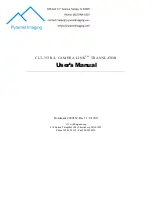
Section 1 — Controls and Architecture
ASR-10 Musician’s Manual
24
Keyboard Range
4
1
2
3
1
3
2
4
Now all of #3 is showing:
Numbers 1, 2 and 4 are partially
showing, partially covered up.
If we now bring #4 to the top of
the pile, Numbers 1 and 2 are
still partially visible, but #3 is
completely covered up.
So it is with instruments loaded into the ASR-10 in Load mode. When you select an instrument,
it is brought to the top of the pile. That is, you will hear the most recently selected instrument over
its whole range when you play the keyboard. Any previously selected or stacked instruments
will be “covered up” wherever their ranges overlap with that of the newly selected one.
Wherever an instrument is not “covered up,” it will continue to play on the keyboard. So you
can see that “splitting” the keyboard is as easy as selecting two or more instruments with
different (or overlapping) ranges.
• All instruments that are selected (yellow LED lit) are “on the pile,” even if they are partially
covered up by another instrument.
Now let’s try the “sheets of paper” analogy in terms of instruments on the keyboard. Suppose
you have two instruments loaded into the ASR-10:
• Instrument #1 is a piano sound, whose range is the entire keyboard;
• Instrument #2 is a bass sound, whose range is only the bottom two octaves.
The ranges of the two instruments can be shown like this:
Instrument #2 — Bass
Instrument #1 — Piano
















































